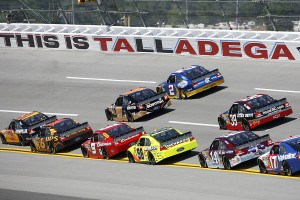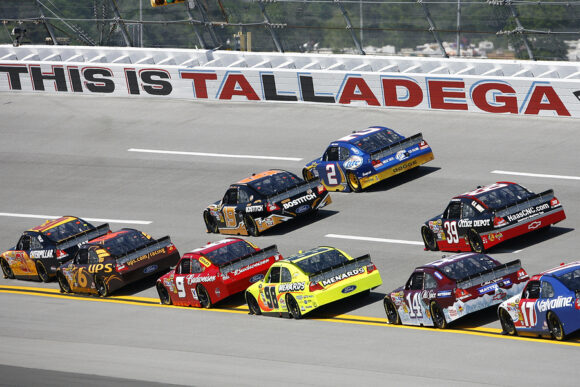NASCAR’s two fastest tracks are reenforcing crossover gates in the wake of the Feb. 23 accident at Daytona International Speedway that injured nearly 30 spectators.
Daytona and Talladega Superspeedway announced Wednesday that the high-banked tracks are installing additional cables at the crossover gates, which allow fans to move between the grandstands and the infield before and after races. The tracks also are adding supplemental tethers between the gate frame and support posts.
“We’re pleased with the solution that we’re implementing for Talladega and Daytona, but fan safety is an ongoing process and we’re going to continue to look at the fan experience across all our venues for future improvement as we continue through,” Daytona President Joie Chitwood said.
One of the eight gates at Daytona was where rookie Kyle Larson crashed on the final lap of the second-tier race the day before the Daytona 500. Larson’s car went airborne, slammed into the fence and spewed debris into the stands.
Larson was unharmed. Dozens of fans were taken to hospitals for treatment, including one who was hit by a tire.
Daytona spent hours repairing the fence before the 500. After the race, the track hired a structural engineering firm to review the fence and propose improvements. NASCAR also was involved in the process.
“We believe we do everything we can to make this sport as safe as possible for our fans, and again, believe our history speaks to that fact,” said Steve O’Donnell, NASCAR’s senior vice president of racing operations.
O’Donnell said NASCAR’s main focus has been on what happened to Larson’s car once it hit the fence. The front end of the car sheared off, and large chunks of debris, including a tire, landed in the stands. O’Donnell said Larson’s car and another one are still being housed at the research and development center in Concord, N.C., where safety experts inspected the cars in hopes of determining potential improvements that might include better keeping cars intact during crashes.
“We’re breaking down every part and piece to see if there’s anything in addition we can learn and share with the team,” O’Donnell said. “The race team is doing that along with us. That process takes a little bit longer because it’s a little bit more detailed in terms of looking at every single part of the car and how some of those things were fabricated.”
Other tracks could see improvements, too.
“Even as we wrap up this specific investigation as it relates to Daytona, our work will continue,” O’Donnell said. “This was Phase I, to get ready for Talladega and Daytona. We’re looking closely at all tracks for NASCAR races, and we’ll make recommendations that we think are in the best interest of safety as we move forward – and as we’ve done for the past 65 years.”
Chitwood declined to say whether eliminating the crossover gates was considered. Previous accidents in which drivers hit crossover gates were severe, but the gates were in the wall and not the fence for Mike Harmon’s accident at Bristol in 2002 and Michael Waltrip’s at the same track in 1990.
“We felt very good with the design and their recommendation to improve the crossover gates, but to keep the gates at this time,” Chitwood said.
Was this article valuable?
Here are more articles you may enjoy.


 NYT, Chicago Tribune Sue Perplexity AI as Copyright War Rages On
NYT, Chicago Tribune Sue Perplexity AI as Copyright War Rages On  Tricolor Trustee Plans to Sue Founder for Auto Dealer’s Collapse
Tricolor Trustee Plans to Sue Founder for Auto Dealer’s Collapse  ‘Dream Is in Sight:’ Chamber, Reinsurers, Insurers Urge Florida to Stay the Course
‘Dream Is in Sight:’ Chamber, Reinsurers, Insurers Urge Florida to Stay the Course  Verlan Files Subro Suit Against Georgia Chemical Plant After $20M Payout on Fire
Verlan Files Subro Suit Against Georgia Chemical Plant After $20M Payout on Fire 